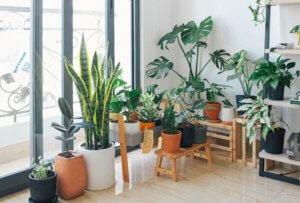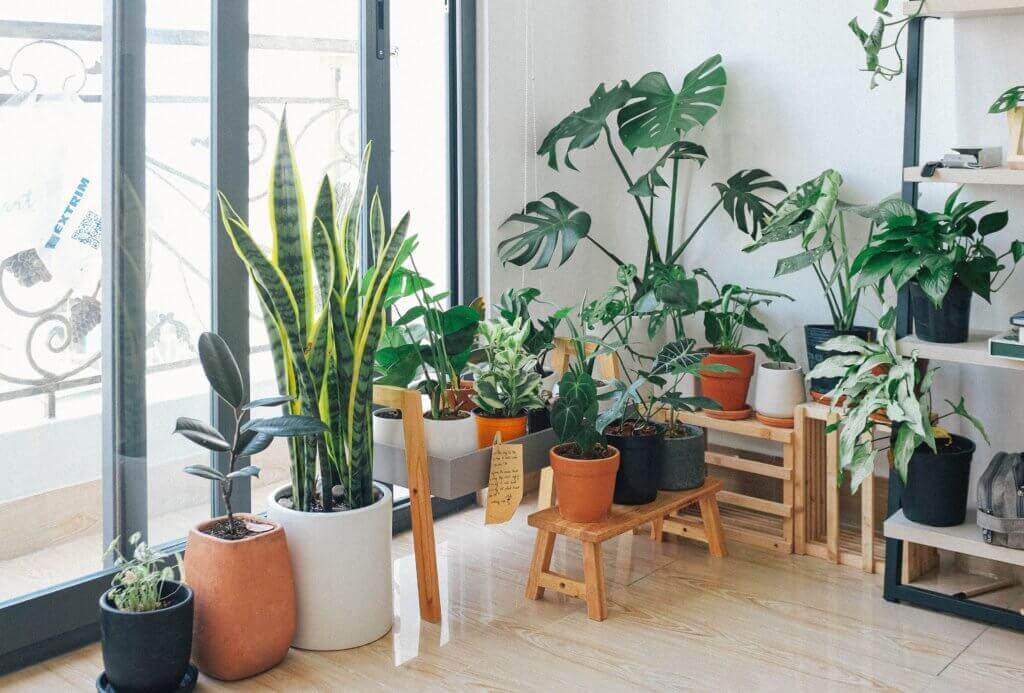Learn which houseplant combinations clash in your indoor garden and steer clear of these five pairings for lush greens.

Houseplants purify the air, enhance tranquility, and bring the beauty and freshness of nature indoors. Investigate companion planting to maximize its advantages. This method involves placing like-minded plants together to improve the health of your garden by reducing pest problems, enhancing pollination, and making the most of your available space. However, because they frequently have different growing requirements, not all houseplants flourish when planted together (in the same pot or gardening space). Learn which pairs to steer clear of for a harmonious indoor garden.
Moonstone Succulents with Maidenhair Ferns
Ferns, a natural humidifier found in nature, can enhance the quality of the air in your house. These indoor plants beautify your living areas while removing dangerous chemicals like formaldehyde and xylene to maintain a fresh and clean environment. Succulents, on the other hand, are tough plants that have adapted to dry climates and store water in their fleshy leaves, stems, and roots. These two shouldn’t be planted together, even if they may make a lovely pair. Their requirements for humidity account for their disparities.
For instance, maidenhair fern flourishes in environments with humidity levels higher than 60%. Succulents, on the other hand, thrive in low humidity. For moonstone succulents, a humidity range of about 40% to 60% is optimum. If it drops below 40%, you could see stress symptoms like wilting. Excessive humidity can foster an atmosphere that is conducive to fungal infections and root rot. A harmonious garden depends on careful consideration of each species’ individual demands.
Orchids and Peace Lily
The air is impressively purified by peace lilies, which have beautiful, durable white spathes that are resistant to alcohol, formaldehyde, trichloroethylene, acetone, and benzene. They can embellish your living area with gorgeous blooms if you give them the utmost care. On the other hand, many people admire orchids for their ethereal and exotic flowers. However, these two houseplants cannot coexist because of their different soil requirements.
Rich organic potting soil with peat or bark works best for peace lilies. Because they are predominantly epiphytic, orchids frequently struggle to live in soil. Plants called epiphytes attach themselves to other plants without becoming parasitic. For instance, orchids have thick, fleshy roots that are designed to cling to bark and trees. For optimum growth, soilless mixes or firmly affixed cork or bark surfaces must be used with orchids. To ensure that each has the best possible environment, it is best to plant them individually.
English ivy and spider plant
Commonly known for their air-purifying properties and trailing vines, spider plants and English ivy. Spider plants get their name from the trailing stems that resemble spiders and have tiny plantlets on them. English ivy, which is renowned for its durable evergreen leaf and gently climbs brick or stone walls to purify the air, is frequently seen doing so. However, because they each demand a different amount of light, you should grow these houseplants separately.
When provided with year-round steady medium to bright light, spider plants flourish inside. They need six to eight hours a day of full, indirect sun. If you’re not careful, the sun’s direct rays can burn the leaves. Ivy plants can, however, adjust to various lighting situations.
English Ivy may grow in a variety of sunshine conditions, including part shade (four to six hours of morning sunlight), part sun (four to six hours of afternoon sunlight), full sun (at least six hours of direct sunlight), and complete shade (zero to four hours of sun). By planting them together, you run the risk of depriving one plant of the proper lighting, which will stress it out.
African Violets and Succulents
African violets and succulents make excellent indoor plants. However, they are unsuitable partners because of their different watering needs. Succulents benefit from periodic, deep watering because they can store water in their leaves and stems. Before watering succulents, make sure the soil is dry at least 1 inch down.
Although caring for African violets is more difficult, it is essential to their general health. They flourish in soil that is consistently moist and well-draining. However, too much moisture can cause root rot, while too much dryness prevents them from growing and blooming. To preserve their health and vigor, it is best to plant them separately in environments catered to their unique requirements.
Cacti and Ostrich ferns
Growing ferns and cacti together might be difficult since they require different maintenance. Ferns do best in environments with high humidity, little to no light (less than four hours per day), and persistently moist soil. For instance, ostrich ferns thrive in partial to full shade and high humidity (about 90 to 95 percent). Cacti, on the other hand, require less humidity (between 40 and 60 percent), well-draining soil, occasional watering, and bright sunlight for at least six hours each day in order to thrive.
When attempting to plant these two plants together, difficulties arise. Due to the high humidity and ongoing hydration needs of ostrich ferns, the cactus may be overwatered, increasing their danger of rotting in very moist environments. Furthermore, the presence of cacti next to ferns may prevent the latter from getting the necessary amount of bright sunshine for optimum growth.
Keep Your Indoor Plants Comfortable and Healthy
Understanding the particular requirements of your houseplants is necessary for designing a harmonious indoor garden. The wellbeing of your companions will be guaranteed if incompatible couplings are avoided.
It’s time to put what you’ve learned about which houseplants you shouldn’t group together to use. Examine the pairings in your indoor garden and make any required adjustments. Your plants will give you thanks by growing vigorously and producing lush foliage.

